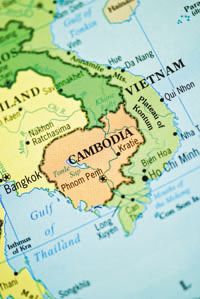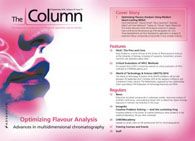Analysis of Breast Milk to Determine Agent Orange Exposure
Scientists in Vietnam have performed high-resolution gas chromatography coupled with high-resolution mass spectrometry (HRGC–HRMS) analysis of breast milk to determine the level of dioxin and furan exposure around the Da Nang Agent Orange hotspot in Vietnam. Agent Orange contamination is associated with elevated and persistent levels of dioxins and furans in the environment and are associated with the occurrence of birth defects among other side effects.
Photo Credit: Getty Images/meshaphoto

Scientists in Vietnam have performed high‑resolution gas chromatography coupled with high-resolution mass spectrometry (HRGC–HRMS) analysis of breast milk to determine the level of dioxin and furan exposure around the Da Nang Agent Orange hotspot in Vietnam.1 Agent Orange contamination is associated with elevated and persistent levels of dioxins and furans in the environment and are associated with the occurrence of birth defects among other side effects.
During the Vietnam war, a major US military base was established in Da Nang, a large Vietnamese port. A military strategy used during the war was to spray herbicides over vegetation to strip back vegetation cover; however, the long‑term environmental health effects were underestimated. Between 1962 and 1971, 72 million litres of herbicides are estimated to have been sprayed over Vietnam — including Agent Orange, Agent White, Agent Purple, Agent Pink, Agent Green, and Agent Blue.1 The Da Nang airbase was one of several locations where Agent Orange was stockpiled and handled.
Although the spraying of Agent Orange ceased in 1970, high levels of dioxins and furans derived from the application of these herbicides are still being detected at high levels in soil samples. In 2007, US Congress agreed to invest in activities to clean-up contaminated areas, including the Da Nang hotspot. Corresponding author Nguyen Hung Minh told The Column: “It is nearly 40 years since the Vietnam War was ended. However, consequences of Agent Orange/Dioxin still remain in Vietnam and continuously cause health risks to young generations. Hundreds of thousand people are possibly at different health risk levels because of the continuous exposures to dioxin from many Agent Orange hotspots in Vietnam.”
In the study published in the journal Science of the Total Environment human breast milk samples were collected from 27 women who had lived in four wards near to the Da Nang airbase — Chinh Gian, An Khe, Khue Trung, and Hoa Thuan Tay — for five years or more. According to Minh, it was challenging to find a representative group. Minh said: “Da Nang is a dynamic city and many people do not reside very long in one area. Therefore, finding the representative group was difficult. Finally, we could find enough samples that met our criteria (groups of mothers who have the first baby and reside for over five years in the area).”
Human breast milk is sampled when screening for dioxins and furans as the compounds are highly lipophilic and accumulate in fat tissues. Using this sample matrix also helps to determine the exposure of infants to environmental contaminants. The authors extracted the samples using pressurized liquid extraction (PLE) and then analyzed by HRGC–HRMS to determine and quantify 17 toxic congeners of polychlorinated dibenzo-p-dioxins (PCDDs) and polychlorinated dibenzofurans (PCDFs). Minh told The Column: “There are continuous exposures to dioxin in the local communities. Even though the exposure pathways are not yet comprehensively studied, it is likely that the source is from Agent Orange/Dioxin hotspot. Newborn babies in the local communities are especially at elevated risk due to transfer of the contaminants from mothers via lactation.” According to the paper, the intake by infants of PCDD/PCDFs was much higher than the tolerable daily intake proposed by the World Health Organization, suggesting the need for further studies. — B.D.
Reference
N.T.M. Hue et al., Science of the Total Environment 491–492, 212–218 (2014).
This story originally appeared in The Column. Click here to view that issue.

A Matrix-Matched Semiquantification Method for PFAS in AFFF-Contaminated Soil
Published: April 14th 2025 | Updated: April 14th 2025Catharina Capitain and Melanie Schüßler from the Faculty of Geosciences at the University of Tübingen, Tübingen, Germany describe a novel approach using matrix-matched semiquantification to investigate per- and polyfluoroalkyl substances (PFAS) in contaminated soil.
Silvia Radenkovic on Building Connections in the Scientific Community
April 11th 2025In the second part of our conversation with Silvia Radenkovic, she shares insights into her involvement in scientific organizations and offers advice for young scientists looking to engage more in scientific organizations.












